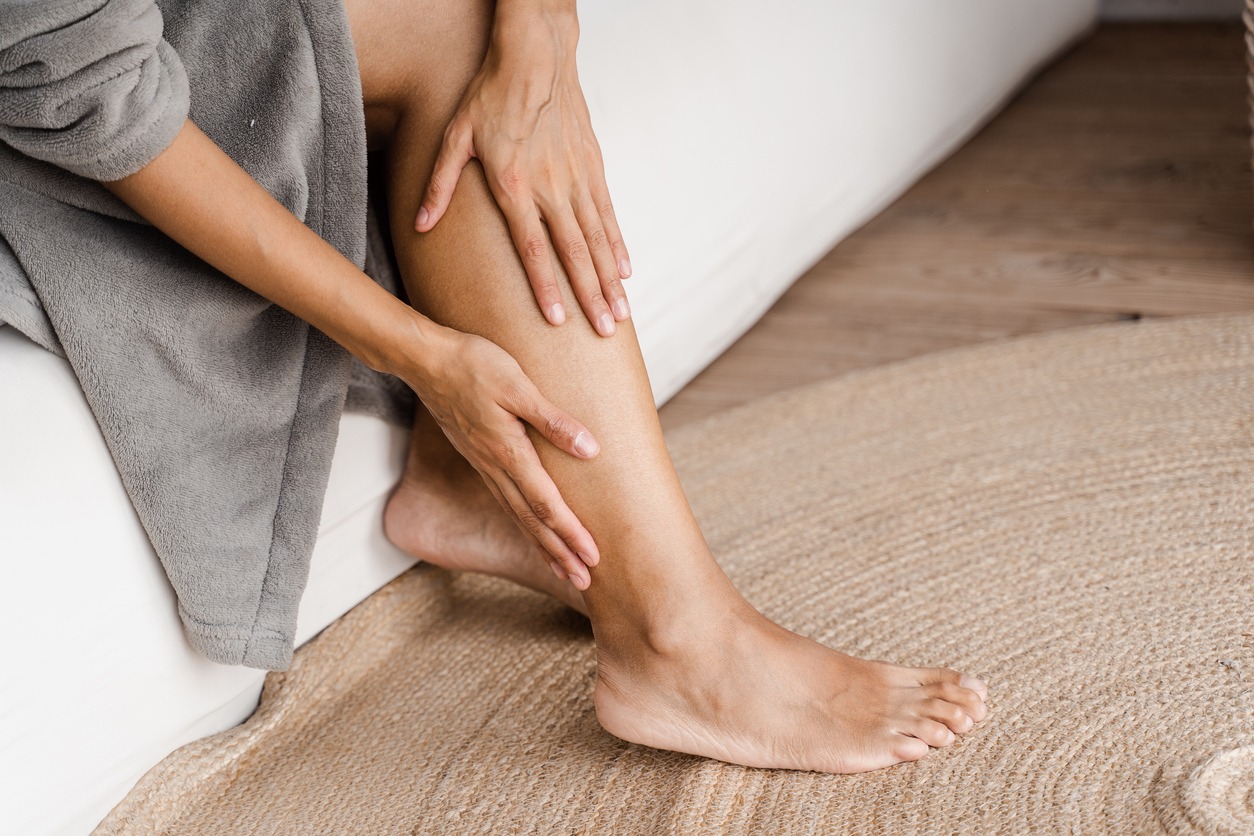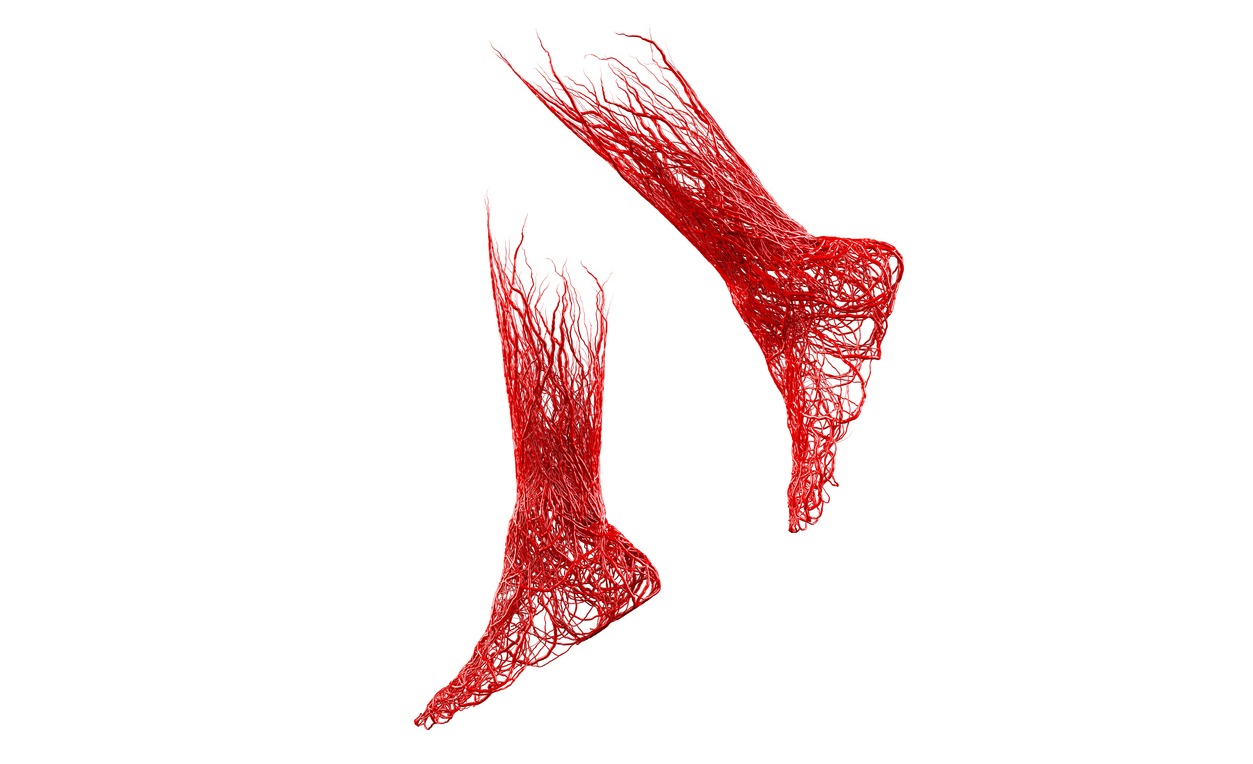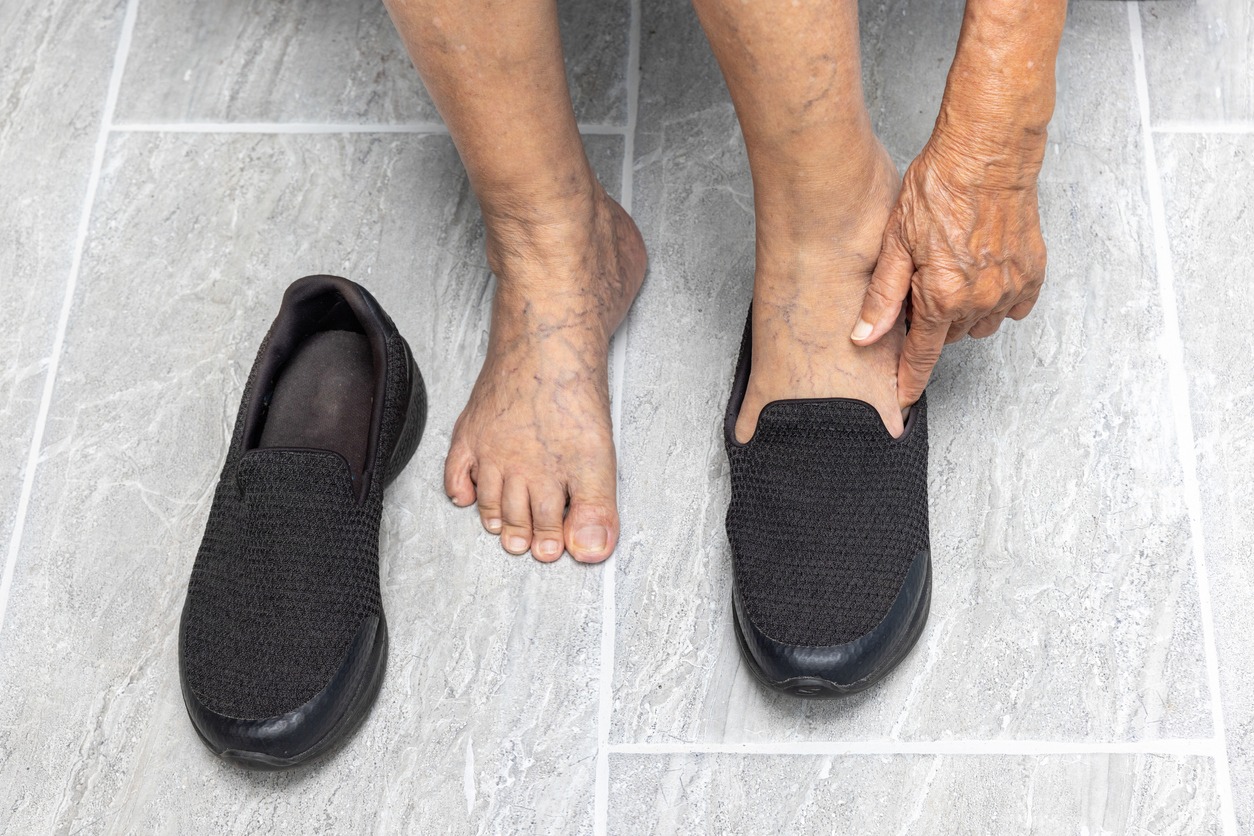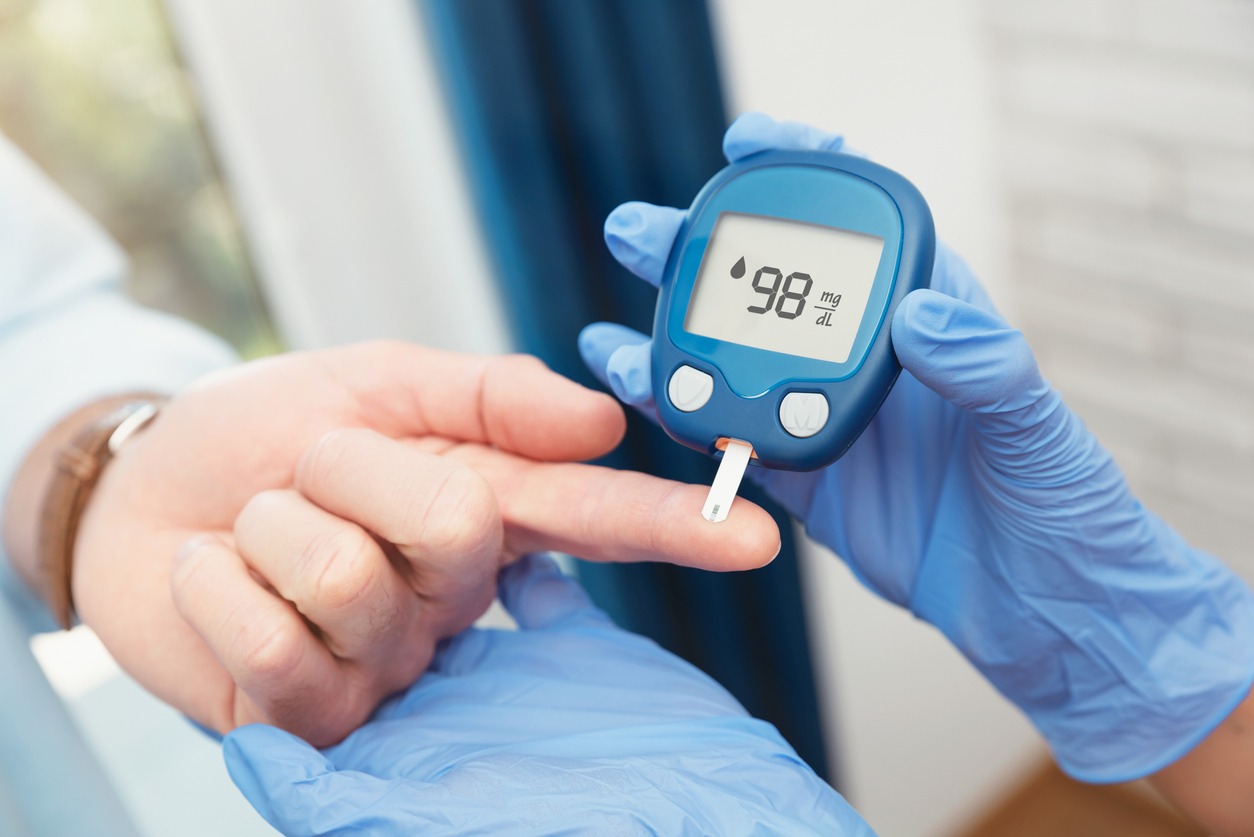Foot pain is common for a lot of people, as our feet are used a lot for different activities that are connected to work, school, exercise, and sports. Our feet are also responsible for giving us balance while also carrying our entire weight, so it is not surprising that we will experience foot pain when we stand, walk, or run for a very long time.
However, when you suffer from too much foot pain, you may have poor blood circulation in your feet. What are the causes of poor circulation on the feet? And how can we treat it? Let us find out as we take a close look at the foot and toe circulation and how to improve it.
Symptoms of Poor Blood Circulation in the Feet
The symptoms that usually arise due to having poor blood circulation in the feet are quite easy to find, although you will have to check how your feet feel and how they look every now and then for you to actually see if the symptoms. Here are some of the common symptoms of poor circulation in the feet.
Foot Pain
Of course, the number one symptom of poor circulation in the feet is foot pain. Blood is important when it comes to the healing process of foot pain caused by overuse or fatigue, as a constant supply of fresh blood can help in bringing oxygen to the affected muscles, and oxygen would then be beneficial in restoring the integrity and function of the muscles. When you have poor circulation, it is difficult for oxygen to travel to the painful areas of your feet, so you will notice that it will take a long time for your feet to heal fully.
One way of relieving foot pain is by using a foot massager. If you are looking for one, read our Guide to Selecting Foot Massagers for Plantar Fasciitis for more options.
Numbness and Tingling Sensation on the Legs and Feet
Another symptom of poor circulation is the numbness that you will feel in your legs or feet. Have you ever sat on your legs for a long time? After you stand up, you will feel a painful numbness or tingling sensation on your legs. This happens when you prevent the veins and arteries in your legs from supplying blood in a constant or normal manner due to sitting on them for many minutes or hours.
If you have poor blood circulation, the lack of blood flow happens more often, even if you don’t sit on your legs or do anything to prevent the veins and arteries from transporting blood. The numbness and tingling sensation you will feel on your legs feel like there are needles that are constantly piercing the skin and muscles of your legs.
Varicose Veins
Varicose veins are a condition wherein the superficial veins (or the veins that are close to the skin) become twisted and enlarged to the point that they show up as bumps on the legs and feet. There are different reasons why some people develop varicose veins in the legs, but one of the most common reasons is the poor circulation of blood. When you have poor blood circulation in your legs, the superficial veins will have to work harder in order to transport blood from your legs and feet to your heart, and because of how overworked the veins are, they will eventually become enlarged.
Main Causes of Poor Blood Flow in the Feet
Besides symptoms, there are also numerous causes of poor blood circulation in the feet, toes, and legs. Here are the things you need to know about each of those causes.
Diabetes
Diabetes is arguably one of the most common causes of poor blood circulation not only in the feet and legs but also in other parts of the body. When you have diabetes, you will experience high blood glucose levels that can damage the veins and blood vessels in your body.
So, if you don’t get treatment for diabetes, there is a high chance that the circulation of blood in your legs and feet won’t work as well as before, and this could eventually lead to bigger problems like foot ulcers that can’t take a long time to heal or won’t heal at all.
Raynaud’s Disease
Raynaud’s disease is a syndrome that causes the blood vessels to spasm, which can then lead to reduced blood flow. If you have Raynaud’s disease, you will see some parts of your body be relatively lighter in color compared to other areas, and this discoloration is caused by the blood vessels and pumping enough blood on the affected body parts.
Although the symptoms of Raynaud’s disease can disappear from time to time, the discoloration of the skin and body parts can usually last for hours. Sometimes, Raynaud’s disease can also cause pain and numbness in the affected areas or parts of the body. [1]
Atherosclerosis
Atherosclerosis, also known as peripheral artery disease or PAD, is a condition wherein the arteries that carry or transport blood from the heart to the legs narrow due to the buildup of fatty plaque on the artery walls. When the arteries become narrow, the circulation of blood becomes affected as blood cells cannot move normally inside the arteries. [2]
In addition to decreased blood flow, atherosclerosis can also inflict pain on the legs or in the affected areas of the body. Reduced blood flow due to the condition can also cause a tingling sensation in the legs.
Acrocyanosis
Acrocyanosis occurs when blood vessels constrict and prevent blood from moving at its normal speed inside the arteries and veins. The restriction of the blood from moving normally would then cause the skin of the legs and feet to turn a pale blue color, which is often caused by a lack of blood in the blood vessels of the affected areas. [1]
Moreover, acrocyanosis would also cause the affected body parts to be cold to the touch. Swelling can also occur on the legs, feet, or other affected areas of the body when the acrocyanosis lasts for hours or even days.
Improving Blood Circulation
Fortunately, improving blood circulation in the legs and feet is fairly simple, as it can be done by doing specific activities, avoiding several things, and consuming products and foods that can help in treating and preventing poor blood flow. Here are the different ways to improve blood circulation in the legs, feet, and toes.
Aside from using compression socks, you may also try foot massage at home. Check out our Guide to Foot Massagers for Plantar Fasciitis for more recommendations.
Walking and Exercising
Getting your blood vessels stimulated is essential in improving blood circulation, and one of the best and simplest ways you can stimulate them is by walking. During the morning, after waking up and eating breakfast, you can go for a walk around the neighborhood, or you can just simply walk around the house so that the muscles on your legs, feet, and toes contract and, in turn, improve blood flow.
Moving your legs and feet is basically what you will need to keep your blood vessels active. Besides walking, you may also want to exercise or play sports, and these activities can also help in making your body healthier and fitter. If you currently can’t walk properly due to foot pain, using canes or crutches may help you. To learn more, you may check our Guide to Choosing Canes and Crutches for Seniors.
Have a Healthy Diet
In addition to walking and exercising, you should have a healthy diet, which should consist of food that can help in improving blood circulation. Some of the foods that you should have for your meals include fatty fish, walnuts, tomatoes, citrus fruits, onions, and different kinds of vegetables.
Having a healthy diet would also ensure that your immune system will be strong enough to fight bacteria, viruses, and fungi from infecting various areas or organs of your body. If you have a healthy diet, you should also know the things that you should avoid taking or consuming, and these include cigarettes and alcohol. Cigarettes and alcohol do raise your blood pressure and heart, but using or consuming them too much can lead to the blood vessels getting strained or overused.
Avoid Shoes that are Too Tight
Ill-fitting shoes can also prevent your feet, toes, and legs from having normal blood flow. When the shoes you are wearing are too tight, the blood vessels on your feet will feel constricted, and this constriction will then make the vessels narrower.
Blood vessels, as we have discussed earlier, would have poor circulation when they are narrow. So, in order to allow your feet’s blood vessels to function normally, you should wear the correct size of shoes. You should try out shoes in sporting goods stores so that you will know which size is the most comfortable or appropriate for your feet.
Surgery
If symptoms worsen to the point that every step on the floor could cause your legs and feet to feel excruciating pain, you should get surgery. Before having surgery, a doctor would first need to perform tests and check-ups on your body to ensure that surgery really is needed to improve blood circulation in your feet and toes. Two of the most common surgeries done to improve blood flow in the legs and feet are angioplasty and bypass surgery.
Angioplasty is a procedure that is done in order to open up a narrow or blocked blood vessel on the legs due to plaque buildup. To open up a blood vessel, the surgeon will insert a stent on the narrow passage. A stent is a small tube made of metal that widens to open up a narrow blood vessel and keeps blood circulation normal.
On the other hand, bypass surgery is a procedure that involves adding a new blood vessel in the veins or arteries of the legs or feet so that blood cells would flow on it instead of on the narrow or blocked passage. The new blood vessel may come from a vein in your arm or leg, and it will then be stitched onto the vein or artery that has a narrow or blocked section.
Preventing and treating poor blood circulation in your legs, feet, and toes is essential so that your daily living wouldn’t be affected by foot pain, numbness, and serious illnesses. We hope that this guide helped you in learning more about blood circulation and how it can be improved.
If you are experiencing foot pain, you may also try using one of our 5 Best Anti-Inflammatory Creams Over The Counter to ease the pain.
References
[1] Ames, H. (2021, January 29). How to improve poor circulation in the feet. Medical News Today. Retrieved January 30, 2023, from https://www.medicalnewstoday.com/articles/poor-circulation-in-feet
[2] Cleveland Clinic. (2021, September 27). Poor Circulation. Cleveland Clinic. Retrieved January 30, 2023, from https://my.clevelandclinic.org/health/diseases/21882-poor-circulation







